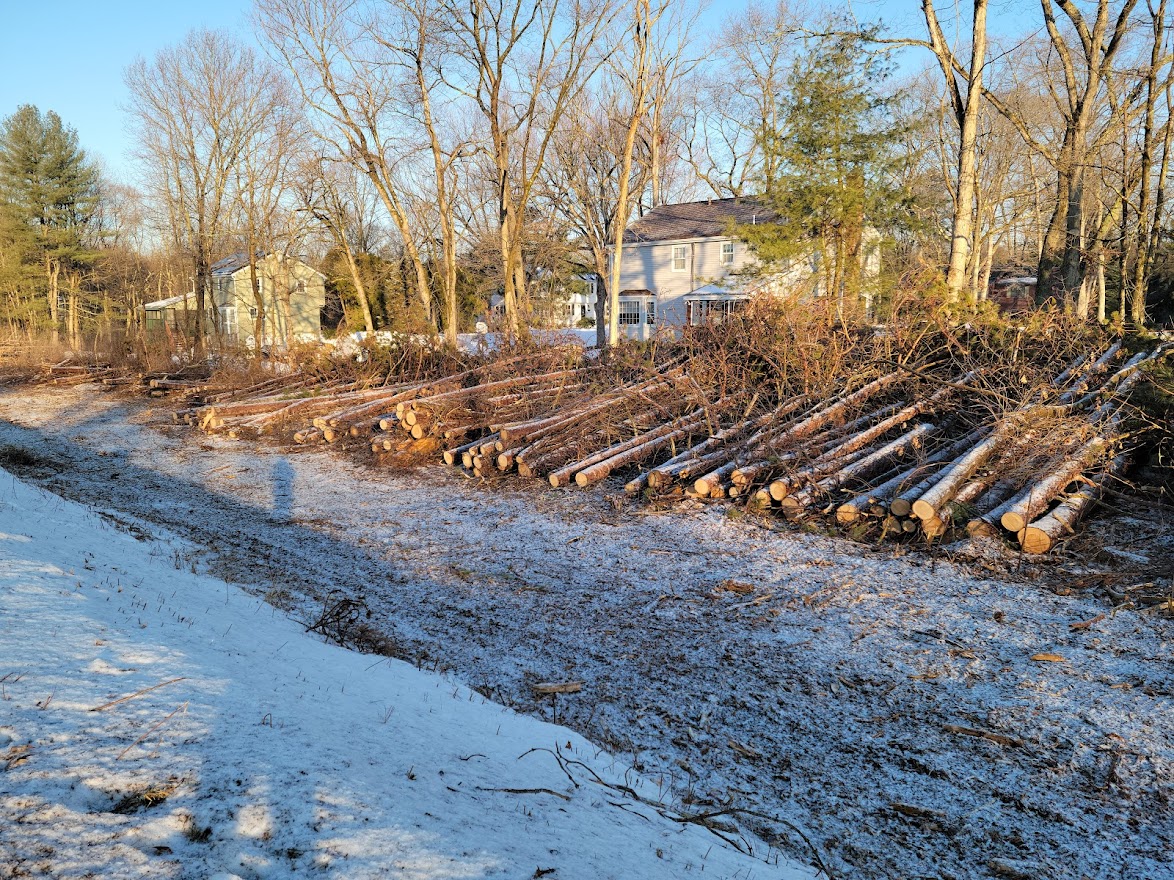Updated at 11:45 a.m. with information that re-planting will not take place.
***
[broadstreet zone=”59983″]
FRAMINGHAM – Early this morning, dozens of red pine trees were removed from the aqueduct off Frost Street in Framingham.
The tree removal will continue the rest of this week, and possibly all month, according to the Massachusetts Water Resources Authority, which owns the property.
The MWRA and its consultant have identified trees along the Hultman Aqueduct route that will need to be removed because of their current condition. The Hultman Aqueduct is not part of the trails program and public access is not authorized by the MWRA.
“Most of the large, tall trees identified for removal are Red Pines and are either dead or in deteriorating condition. These conditions pose both a public safety and property concern,” said the state agency.
“The trees identified for removal are all located within the MWRA’s right of way,” said the MWRA.
[broadstreet zone=”59947″]
The City of Framingham has no jurisdiction, as the property is owned by the MWRA.
UPDATED: The MWRA is “not planning on replanting anything is this area as roots can be detrimental to the aqueduct itself.”
Red Pine is not native to this area.
They were planted in this area decades ago, as part of a federal program.
They were planted way too close together to allow them to mature as planted, but now that they have matured that way they are extremely weak (not enough resources for so many trees) and top heavy (a result of being too close together) so that when the crown becomes loaded with snow, they come down like dominoes, explained Nicola Cataldo, a conservation horticulturist.
Many times they lift out of the ground roots and all, adding serious soil disturbance to the damage, explained Cataldo.
[broadstreet zone=”59948″]
Since the project was abandoned, the site became a haven for invasive plants like bittersweet and native but unwanted plants like poison ivy, said Cataldo.
Cataldo said what is more important, is that the aqueduct is home to “several native American chestnuts that were believed to be extinct in the 1960s. They are struggling back from the roots and they do better each year. What is so significant there is that these trees were almost wiped out by a fungus called chestnut blight, and the fact that they are struggling back from the historic roots may indicate that the species is learning to stand up to the virus. There are important projects going on, trying to bring back the native chestnut. Getting red pines out of there will help.”
[broadstreet zone=”59946″]
***

Photo courtesy of a SOURCE reader.





Photos by Nicola Cataldo
